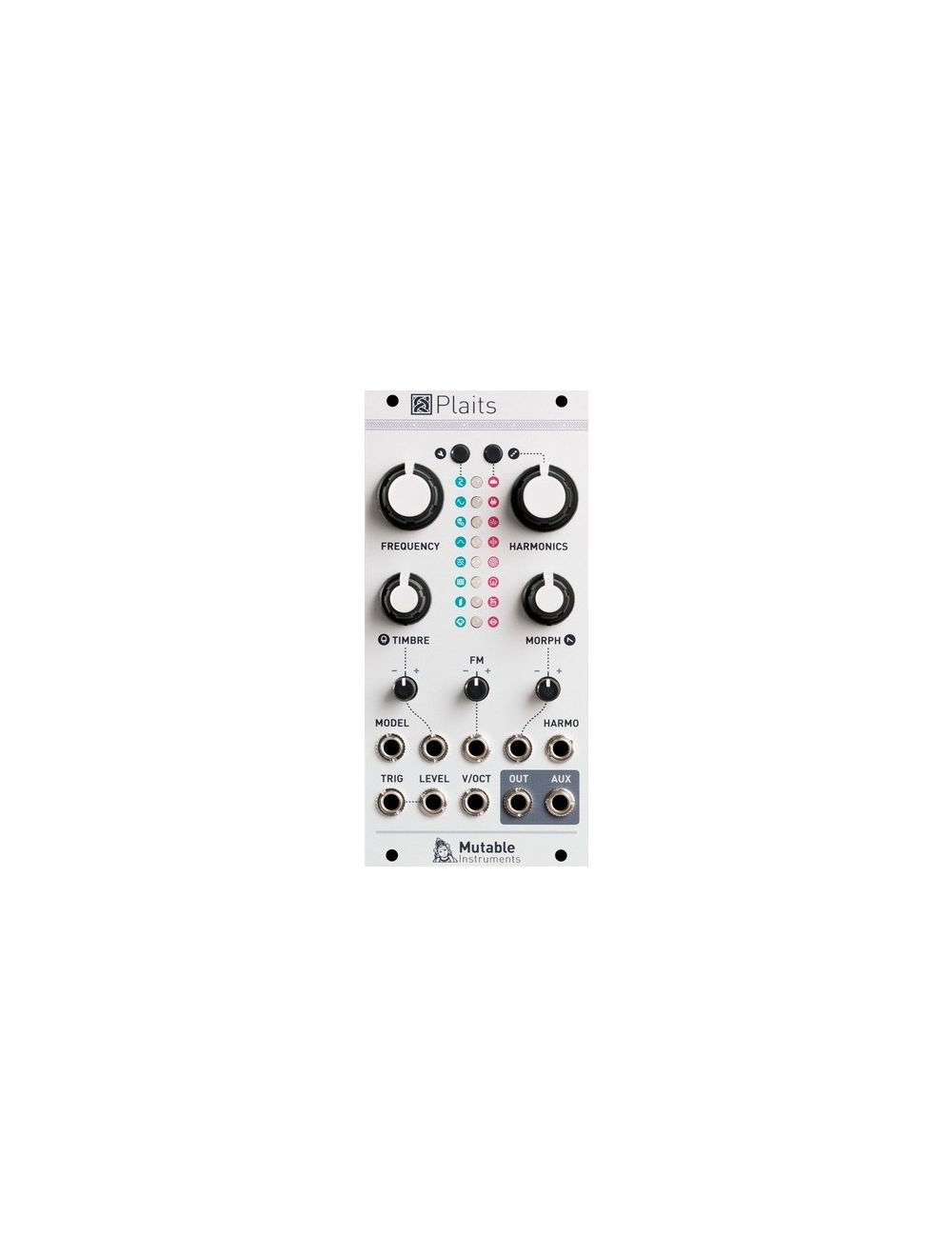Mutable Instruments - Plaits
The Mutable Instruments - Plaits is the spiritual successor of the brand’s best-selling voltage-controlled sound source, Braids. It is not just mkII version: its hardware and software have been redesigned.
Just like its predecessor, it offers direct access to a large palette of easily tweakable sounds, covering the whole gamut of synthesis techniques. What has changed is the interface: gone are the screen, menu system, hidden settings, and the long list of somewhat redundant synthesis models.
Thanks to additional CV inputs, and to the use of 3 timbre-shaping parameters per model, Plaits is straightforward to use, and much closer to the ideal of one synthesis technique = one model. What were fragmented islands of sound in Braids are now part of a continuum of sounds.
The module is very easy to use as a stand-alone voice or percussive source: its built-in low-pass gate allows the module to be operated without a VCF or VCA, and an internal decay envelope is normalled to some of the CV inputs.
Great care has been taken regarding audio quality, anti-aliasing, and CV interpolation, resulting in a richer, cleaner sound.
Features:
8 synthesis models for pitched sounds:
- Two detuned virtual analog oscillators with continuously variable waveforms.
- Variable slope triangle oscillator processed by a waveshaper and wavefolder.
- 2-operator FM with continuously variable feedback path.
- Two independently controllable formants modulated by a variable shape window (VOSIM, Pulsar, Grainlet, Casio CZ-style resonant filter…).
- 24-harmonic additive oscillator.
- Wavetable oscillator with four banks of 8x8 waves, with or without interpolation.
- Chord generator, with divide down string/organ emulation or wavetables.
- A collection of speech synthesis algorithms (formant filter, SAM, LPC), with phoneme control and formant shifting. Several banks of phonemes or segments of words are available.
8 synthesis models for noise and percussions:
- Granular sawtooth or sine oscillator, with variable grain density, duration and frequency randomization.
- Clocked noise processed by a variable shape resonant filter.
- 8 layers of dust/particle noise processed by resonators or all-pass filters.
- Extended Karplus-Strong (aka Rings’ red mode), excited by bursts of white noise or dust noise.
- Modal resonator (aka Rings’ green mode), excited by a mallet or dust noise.
- Analog kick drum emulation (two flavors).
- Analog snare drum emulation (two flavors).
- Analog high-hat emulation (two flavors).
Internal low-pass gate (LPG)
- Dedicated LEVEL CV input controlling the amplitude and brightness of the output signal.
- The internal LPG can also be directly plucked by the trigger input.
- Two parameters of the LPG can be adjusted: amount of low-pass filtering (VCFA to VCA), and response time of the virtual vactrol.
Plaits versus Braids?
Plaits shares no hardware or software with Braids!
- Floating-point DSP code written from scratch or inherited from Elements, Warps and Rings.
- Band-limited synthesis used almost everywhere, producing aliasing-free results at the base sample rate of 48kHz (Braids ran at 96kHz and used naive oversampling).
- High-quality Sigma-Delta ADC for CV acquisition, approaching a resolution of 16-bit (12-bit for Braids).
- ADC reads are interpolated in software to eliminate zipper noise.
- DC-coupled audio output, extending the range of the module to very low frequencies (Braids could not reach LFO ranges).
- Lean hardware design: less HP, mA and €.





